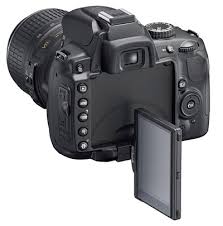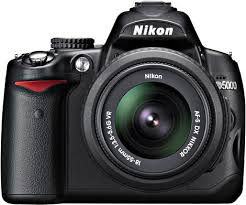
Released in June, the Samsung Omnia II is now available from Verizon Wireless for $199.99 with a two-year contract and after a $100 mail-in rebate. The successor to the Samsung Omnia has been hotly anticipated for months, but in that time several excellent touch-screen smartphones have come to Verizon, such as the Motorola Droid and HTC Droid Eris, making us wonder if Samsung waited too long to release the device. However, after spending a couple of days with the Omnia II, we can say that the Windows Mobile 6.5 smartphone certainly has earned a spot in our hearts, distinguishing itself from the competition with excellent multimedia capabilities. Samsung has done a nice job of revamping its TouchWiz interface, bringing more customization options and making Windows Mobile easier to use for consumers, though business users might find the more sophisticated and streamlined HTC Sense user interface on the HTC Imagio more attractive. That said, the Samsung Omnia II is certainly a worthy upgrade for current Omnia owners or any Verizon customers looking for an advanced multimedia smartphone.

Design
Like many of the touch-screen smartphones available today, the Samsung Omnia II has a candy bar design but it is slightly on the bulkier side at 4.69 inches tall by 2.35 inches wide by 0.52 inch thick and weighing 4.76 ounces. However, there's good reason for the extra size and that's the gorgeous 3.7-inch WVGA (800x480 pixels) AMOLED touch screen.
As we've noted before, AMOLED screens have an advantage over standard LCDs by offering a sharper and brighter picture, all while consuming less power. When compared with the first Omnia and other touch-screen smartphones, videos and photos look amazing on the Omnia II. It has a smoother picture, wider viewing angles, and higher contrast. Also, a built-in accelerometer changes the screen orientation when you rotate the phone for certain applications like the Web browser, messages, photos, and video. Also, while the smartphone's touch screen is resistive and requires a bit more pressure than a capacitive touch screen to move among various home screen panes, we found it quite responsive and didn't require the precision of a stylus to select items. We should note that the touch screen was a bit temperamental when we first used it, but after realigning the screen with the stylus, everything was fine.
Below the display, you get Talk and End/Power keys and a Main Menu key (more on this later). There is an OK button, but it's on the left side of the phone along with the 3.5mm headphone jack and volume rocker. The microSD expansion slot is also located on this side but you'll have to remove the stylish red battery door to access it. On the right spine, you'll find the stylus, a Micro-USB port, a lock key, and a camera activation/capture button. Last but not least, the camera and flash are located on the back. The only thing we missed was having a back button for returning to the previous screen, since an onscreen option wasn't always available.
Keyboard and user interface
While the physical aspects of the Samsung Omnia II aren't radically different from the competition, the smartphone does have some unique "design" features beneath the surface. For one thing, it offers an onscreen portrait and landscape QWERTY keyboard with Swype technology, which Webware previewed a while back. Instead of pecking at individual keys, Swype lets you spell out a word by dragging your finger on the keyboard from letter to letter. Swype's algorithm then does its best to figure out what word you're trying to input; it also automatically enters a space after you complete a word and includes certain tricks, such as circling a key to input a letter twice. Admittedly, we were very skeptical of Swype. However, to our surprise, it worked and was mostly accurate. We ran into some problems when entering terms that weren't true words, such as an instant-messaging handle, though Swype will try to come up with a list of possible results. It also takes some adjustment to enter long words since you have to keep your finger on the screen the whole time. Still, we were always amazed when it came up with the correct word.
Another distinctive characteristic of the Omnia II is the Samsung TouchWiz user interface. Revamped and now with more features, TouchWiz 2.0 makes it easier for people to access their apps and multitask. The general idea is the same as the previous version. On the left side of the screen, you'll find an expandable widget tray where you can drag and drop numerous widgets to one of three home screen panes. However, the Omnia II is far more customizable than its predecessor since Samsung has added more widgets, such as ones for Facebook and Bing. In addition, Samsung has officially opened its Widget Store. From here, you can download from a catalog of around 200 widgets created by third-party developers, which includes widgets for Digg, LOL Cats, E Online, a tip calculator, and much more.
Also, along the bottom of the home screen, there is a notification bar along (as well as on the lock screen) to alert you to any missed calls, new messages, and voice mail, and in a nice touch Samsung added a feature where if you tap the top of the screen, it will magnify the status bar the help you better see and manage your wireless options, sound profile, and battery life.
Samsung also completely redid the main menu page. Pressing the menu key below the display will bring up a grid view of all your phone's apps. There are 12 icons per page and each page is customizable so you can rearrange the apps in the order you want. All you have to do is press the Edit button on the bottom of the screen and at that point you can move the icons to any position on any menu page. Pages will be added as you add more applications to your phone, and you can move among pages by swiping your finger left to right, or vice versa. Right next to the Edit button is one of our favorite additions: the new Task Switcher function. This feature shows you all your running applications in thumbnail visuals and lets you easily switch between tasks, exit out of an app, or end all running programs. It alleviates one of the biggest problems of Windows Mobile, which was multitasking. In fact, TouchWiz 2.0 in general does a good job making the operating system easier to use, so much so you can hardly tell it's a Windows Mobile smartphone.
Finally, like the Samsung Behold II, the Omnia II offers the 3D cube interface for the phone's various multimedia capabilities. However, unlike the Behold II, there is also a toolbar on the where you can launch the same entertainment apps with a simple tap, which is much more functional than the gimmicky cube. Overall, TouchWiz 2.0 makes much more sense and is more useful on the Omnia II than the Behold II, as it provides the customization capabilities that Windows Mobile lacks and offers a much more intuitive user interface.
Accessories
Verizon packages the Samsung Omnia II with an AC adapter, a USB cable, a mic adapter/FM radio antenna, a stylus, a software CD, and reference material. For more add-ons, please check our cell phone accessories, ringtones, and help page.
Features
As mentioned, the Samsung Omnia II is a Windows Mobile 6.5 Professional Edition device, which includes new features such as Microsoft's My Phone backup service and an improved Internet Explorer Mobile. Aside from the Microsoft Office Mobile Suite and preloaded apps, you can also access the Windows Marketplace for Mobile to find and download apps for your device in all categories, including entertainment, productivity, travel, and so forth. Out of the box, the Omnia II ships with such standard personal information management tools as an alarm clock, calculator, memo pad, voice recorder, and a Smart Reader business card scanner.






















